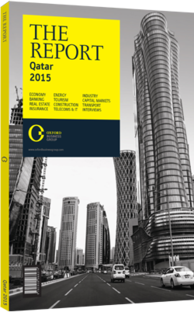Qatar's utilities projects depend on increased R&D
While rapid progress is being made on a major campaign to expand the country’s power and water infrastructure, Doha is also at the centre of research and development (R&D) efforts in the utilities field. Programmes currently under way in the state are investigating ways to improve desalination techniques, reverse the salination of Qatar’s groundwater, and power future water plants with solar energy (see analysis). At the same time, “soft power” campaigns aim to raise public awareness of water’s vital importance to the country.
KNOWLEDGE BASE: Since Qatar embarked on its ambitious national development plan, Qatar National Vision 2030, the state has been investing in programmes that will shift the nation’s economy from being dependent on hydrocarbons and natural resources to being knowledge-based. This has entailed investment in education and human resources, as well as incentives for scientific research outfits to move to Qatar. A number of key organisations have been set up to facilitate higher levels of R&D, with Qatar Foundation (QF) playing a central role. Under the auspices of QF two projects were launched: the Qatar Science and Technology Park (QSTP), a free zone for technology research; and the Qatar Environment and Energy Research Institute, which focuses on energy and water security.
WATER SECURITY: Water security entails three areas of research: desalination; re-use, including wastewater; and aquifer recharge. The first area involves looking at the most efficient means that already provide Qatar with the bulk of its water; the second area examines waste-water reuse, which is of increasing importance to Qatar’s industrial programmes, in tandem with major population growth; and the third area concerns the impact of injecting water artificially into the underground aquifer.
Water recharge in particular is of interest to ConocoPhillips Global Water Sustainability Centre (CGWSC), located at QSTP. With Qatar surrounded by sea, and its freshwater aquifer depleted, seawater has been creeping in through the porous, sandy soils along the coast. Several techniques for dealing with this have been established internationally. The CGWSC advocates one known as indirect potable re-use (IPR), by which municipal wastewater is treated and re-injected into the ground. This technique pushes out the encroaching seawater and raises groundwater quality, as it is generally brackish in Qatar. Using recycled wastewater in industry is also an area of study becoming more accepted in Qatar as major infrastructure projects like the Industrial Area Sewerage Treatment plant expansion and the Doha North Sewage Treatment Works demonstrate.
DESALINATION INNOVATION: The CGWSC is looking at more efficient ways of undertaking desalination.
Many plants in Qatar and the wider Gulf region use a thermal desalination technique – essentially leveraging their abundant hydrocarbons supplies to heat seawater and distil potable water from it. However, this is an energy-intensive business. More recent technology uses a semi-permeable membrane and hydraulic pressure to perform the same task using less energy.
The CGWSC, however, is looking to the next generation again of membrane desalination techniques, a method known as forward osmosis (FO) that takes advantage of osmosis, whereby molecules move between solutions of different concentrations, but unlike seawater reverse osmosis FO does not require hydraulic pressure, and thus requires lower energy input. Research into industrial-scale FO is still ongoing internationally, with other membrane technologies now becoming more widely accepted in the meantime.
The Facility D power and desalination plant being constructed at Ras Abu Fontas will use thermal and membrane methods. Reports suggest that 33-40% of the capacity – 655m litres per day – would be provided by seawater reverse osmosis, while the remainder would be supplied by one of two thermal techniques: multiple effect distillation or multi-stage flash distillation. This is encouraging, with membrane technologies likely to come even more into their own in future, particularly if lower-energy solar power projects come in to take up a larger share of Qatar’s desalination capacity.
You have reached the limit of premium articles you can view for free.
Choose from the options below to purchase print or digital editions of our Reports. You can also purchase a website subscription giving you unlimited access to all of our Reports online for 12 months.
If you have already purchased this Report or have a website subscription, please login to continue.

